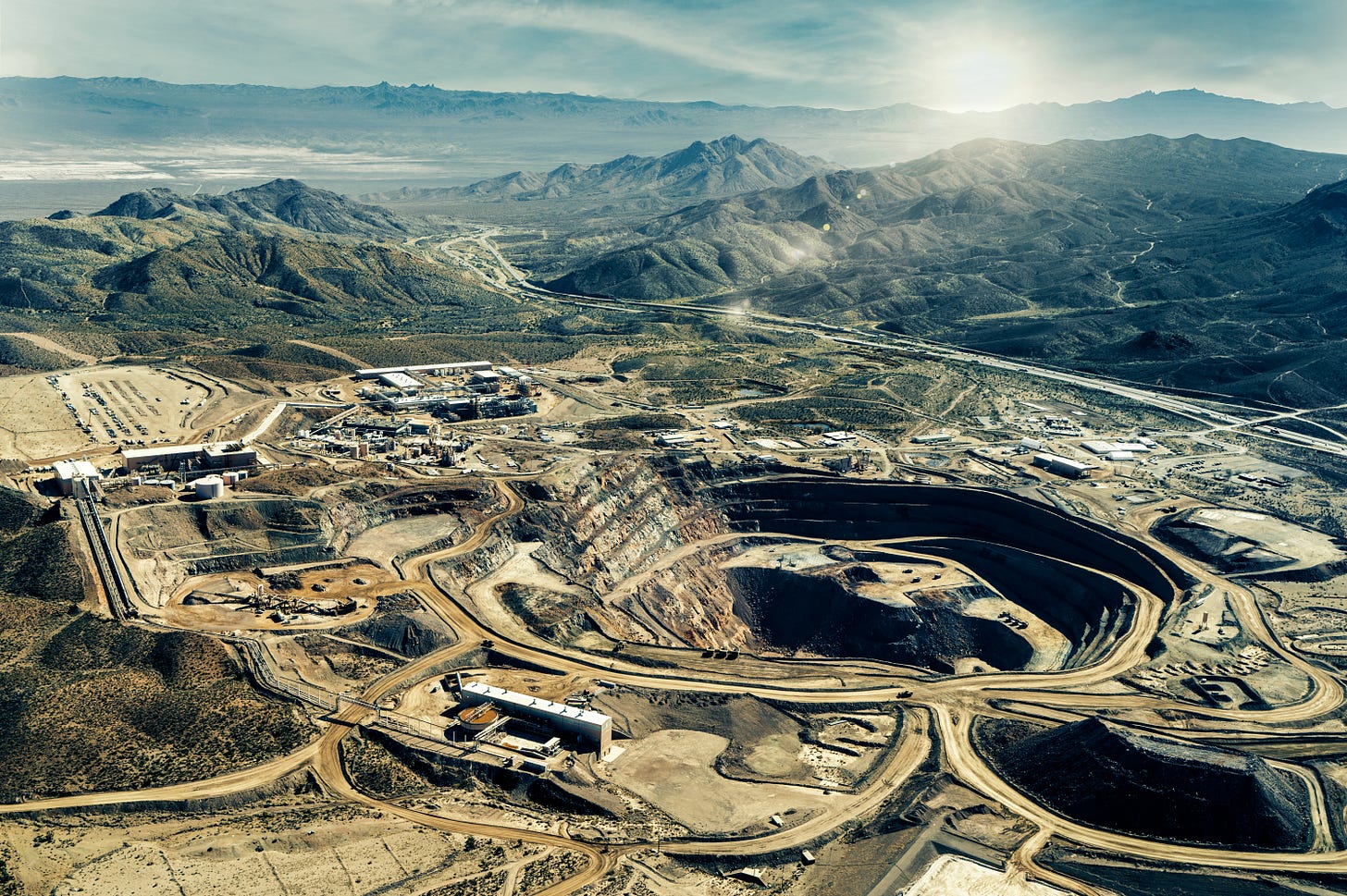US Government Gets Into the Rare Earths Business; China Rules Recycling
And more about the real costs of renewable energy and digital technology—and how we can do better.
Welcome back! I took off the last couple of weeks to go backpacking and celebrate a milestone birthday. How was it? Thanks for asking. See the picture at the bottom.
US Government Gets Into the Rare Earths Business
Over the last week, America’s only significant rare earths producing company sealed major deals with two of the biggest potential customers in the world: the US government and Apple. It could add up to a big step toward breaking the US’s dependence on Chinese rare earths, and might also boost recycling.
Regular readers by now know that rare earths are a set of obscure metals that are crucial for a head-spinning range of technologies, including electric vehicles, cell phones, and military hardware including jet fighters, missile-guidance systems, and drones. Rare earths have many uses, but probably the most important is in making permanent magnets, the gadgets that make electric car motors work, among other things. At the moment, China dominates this entire supply chain, producing nearly 90 percent of both the world’s rare earths and its permanent magnets. When Trump started threatening to impose tariffs on Chinese goods, Beijing responded by throttling exports of rare earths and permanent magnets, rattling the spines of Western industrialists and policy makers.
All of which apparently led the Trump administration to conclude that this was no longer a job for the free market. Last week, the Department of Defense took a page from China’s playbook and cut a deal to make itself the sugar daddy to MP Materials, a company runs the only currently operating rare earth mine in the US and which is also building an American permanent magnet factory. The Pentagon will invest $400 million into MP to help it build a second magnet factory, and committed to buy all of that factory’s products for ten years at a guaranteed minimum price of $110 per kilogram—which is higher than the current market rate. That will make the US government the company’s biggest shareholder, as well as its most important customer.
Just a few days later, MP Materials announced another huge deal, this time with Apple. The tech colossus signed on to a $500 million agreement to buy new MP magnets made from old recycled magnets, used electronics and scrap. MP aims to build a rare earth recycling facility at its mine in southern California, and use the recovered metals to build new magnets at the factory it is building in Texas. Apple says it will help equip that factory with manufacturing lines designed specifically for its products. All of that will be expensive, but Apple too wants to free itself from reliance on China for these key components.
This is an important political and economic development, but it’s also an impressive business story. Back in 2022, I visited MP Materials’ mine and wrote about the company as part of my research for Power Metal, the book. At the time, I was skeptical about their prospects. They’re still a long way from achieving everything they’ve set out to do, but I must admit they’re doing very well so far.
Of course, there are many ways in which MP could stumble while trying to execute these ambitious plans. To meet all its new obligations, “MP must simultaneously construct and scale two complex manufacturing facilities while sourcing specialized equipment, recruiting high-skilled engineers, and complying with strict U.S. environmental and procurement laws,” notes Rare Earth Exchanges. That website also points out some bigger-picture issues: “Instead of creating a transparent, rules-based domestic market, Washington has essentially anointed a national champion, and everyone else is left to fend for themselves. Is this the dawn of a national rare earth ecosystem, or the quiet birth of a state-favored monopoly that may never be able to supply enough for the entire market?”
All that said, I think it’s a smart move for the US government to provide this kind of direct support to the fledgling domestic rare earths industry. The Chinese government does this kind of thing as a matter of course; that’s how it came to dominate production of not only rare earths but all critical metals as well as renewable energy hardware and electric vehicles. China’s leaders realized those industries were key to their country’s well-being, and so they made sure they flourished, regardless of the fickle forces of the market. We in the West should be doing the same, and not only for rare earths.
China Rules Battery Recycling
Another company I wrote about in Power Metal hasn’t fared so well. Li-Cycle, a Canadian outfit with big ambitions to be a battery recycling powerhouse, recently went bankrupt. The reasons were many, but a major one was the difficulty of competing, as ever, with China, which dominates battery recycling as thoroughly as it does battery production. Benchmark Mineral Intelligence breaks down the numbers.
Interesting stuff, right? If you think so, please do me a favor and tell your friends about this newsletter. Just click below. Many thanks!
More News Worth Knowing
♻️ Most wind turbine blades and solar panels get junked instead of recycled. Here’s a good rundown on why that is, and what people are trying to do about it. Meanwhile this is an interesting project backed by Ames National Laboratory to recover rare earths from shredded e-waste.
🌊 Japan is going to try to extract rare earths from deep sea mud
🤑 Trump promises 50% tariff on imported copper. US copper miners rejoice.
🤮 Nickel mine waste floods homes in Indonesia








Missed ya. Thanks for the articles. Top and bottom photos are quite a contrast and suggest the high risks that arrive with rare earths.
Hi Vince, thanks for calling attention to this exciting development. I don't know if you subscribe to the Doom room, but they also did a story about how it's actually a very short-term investment that is already heading skyward. As opposed to the vast majority of industrial subsidies that are just disguised bailouts.
https://newsletter.doomberg.com/p/how-its-done